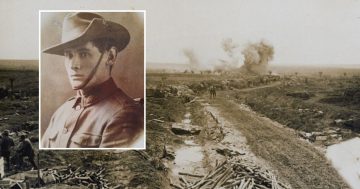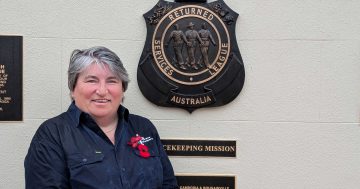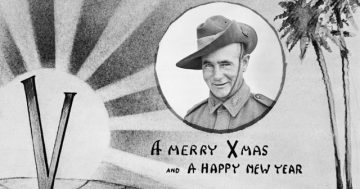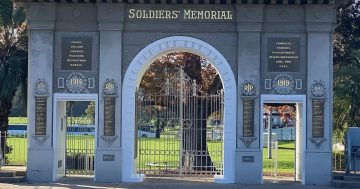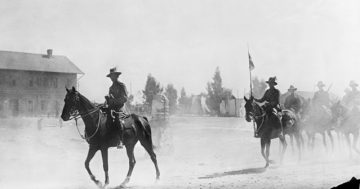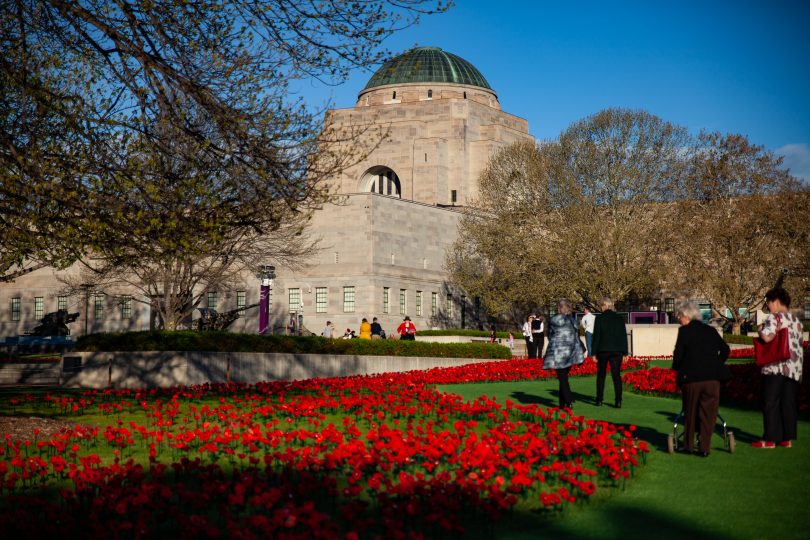
The field poppies at the Australian War Memorial for Remembrance Day. Photo: George Tsotsos.
When the new expanded Australian War Memorial opens in about a decade’s time, Director Brendan Nelson will be able to declare ‘mission accomplished’.
His achievement at securing nearly half a billion dollars over nine years to redevelop the AWM with bipartisan support is astounding, especially in a climate of budget uncertainty and ongoing cuts to other national cultural institutions in Canberra.
He mounted a persuasive emotional argument – that the stories of more recent and current defence operations needed to be told sooner rather than later, so Australians would know about them in order to promote healing within the veteran community.
“If the War Memorial had perhaps told the story of the Vietnam War broadly and deeply earlier then maybe some of those men may not have suffered as much as they have,” he told ABC radio.
But emotion aside, this is an overreach. $498 million, following $175 million spent on the Centenary and over $100 million for the Sir John Monash Centre at Villers-Bretonneux in France, is a phenomenal amount of money.
Meanwhile, museums and galleries across the nation wish they were so lucky. And here in Canberra, the National Archives, National Gallery, National Library, National Museum, National Portrait Gallery and the Museum for Australian Democracy all suffer at the hands of the pernicious efficiency dividend.
Their work and the stories they tell encompass the breadth of the Australian experience and should be no less important than an institution that focuses on one, admittedly not insignificant, part of the nation’s story.
Dr Nelson is a passionate, authentic advocate for the AWM and veterans, and with deep political links and an unabashed will to reach out to corporate supporters, including major defence contractors, he has lifted the institution to an almost unassailable position in the nation’s consciousness.
And that is part of the problem.
Many years ago before Dr Nelson’s time, there was a public outcry when local gas provider ActewAGL’s branding became a visible part of the closing ceremony and the eternal flame at the AWM.
That condemnation of any commercialisation on the sacred ground of the Memorial now seems a fairly quaint time of innocence. From the BAE Systems Theatre to News Corp-sponsored coins, Anzac is seen more and more as a commodity.
But in the post 9/11 era of the never-ending war on terror, heightened national security and keeping Australia safe, you take aim at the AWM at your peril.
Hence Labor’s unqualified support, only months out from an election that is Bill Shorten’s to lose.
For a Government that has made national security its own and without any qualms about appropriating the military for its own political purposes, finding $498 million for Dr Nelson’s plans fits perfectly into its narrative, especially in the lead-up to the Anzac Centenary climax on Remembrance Day.
There is no question we should remember, reflect and honour the sacrifice and service of those who have played a role in the defence of the nation.
But the quiet dignity of how we remember seems to have morphed into something quite different, that elevates the military to a position that rests uneasily with our understated yet firm values of democracy and fairness.
The offers this week from Virgin Australia of priority service and salutes is but a natural consequence of what is becoming unnervingly close to a cult of the Digger. Fortunately, the veteran community found the proposals unnecessary and a little cringeworthy. Many immediately thought of police, ambulance and fire services and how they are in the firing line every day.
On Sunday, at the eleventh hour, we should gather if we can and remember. At memorials across the country, or in our workplaces and homes, we should indeed remember.
And not forget that there is more to this country’s history and culture than war.
Original Article published by Ian Bushnell on the RiotACT.







